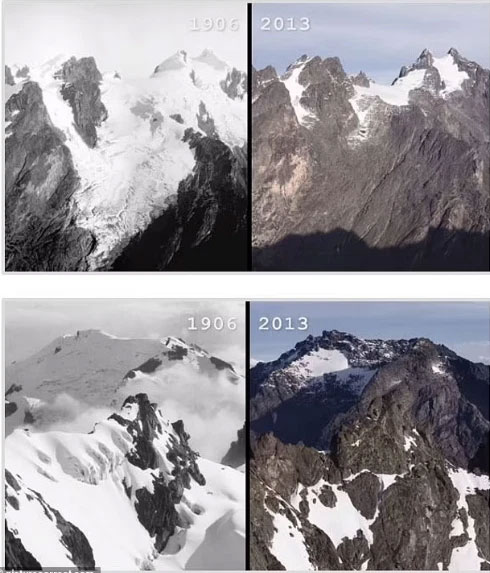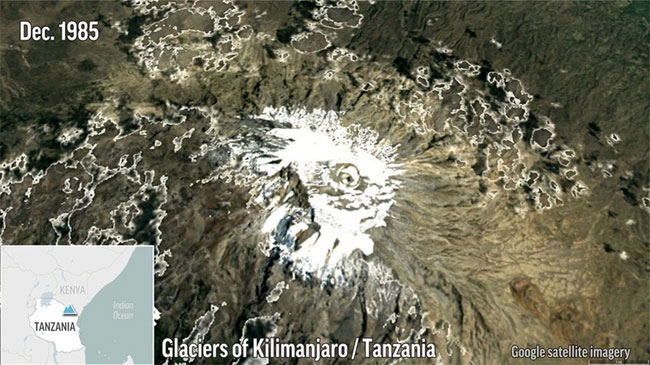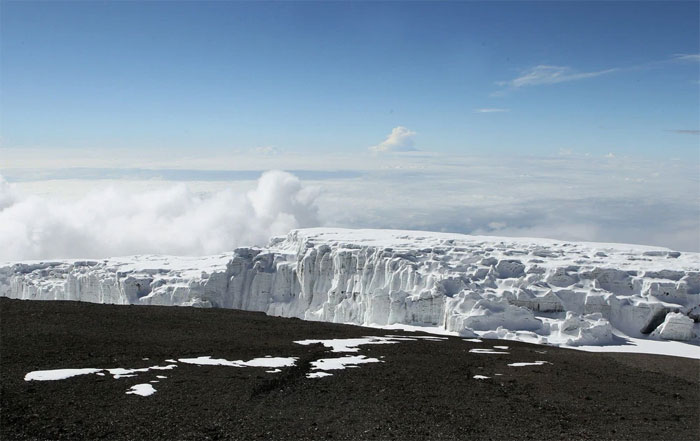Small glaciers in Africa may completely disappear by the 2040s, with climate change being the main culprit.
A newly released report from the World Meteorological Organization (WMO) reveals surprising information about the glaciers in Africa.
The glaciers on Mount Kilimanjaro, Mount Kenya, and the Rwenzori Mountains are retreating faster than the global average.
Furtwängler, the largest glacier on Kilimanjaro, has shrunk by 70% from 2014 to 2020, and the glaciers in the Rwenzori Mountains have lost up to 90% of their mass.
The Rwenzori Mountains, often referred to as the “Alps of Africa,” “Mountains of the Moon,” and “source of the Nile,” have seen significant glacier loss, leaving only bare mountainsides.


Changes in glacier mass on mountain peaks in Africa.
Mount Kenya, the second-highest mountain in Africa, is home to the Lewis Glacier, which has lost 90% of its volume since 1934. Glaciers on Mount Kenya are expected to diminish even more rapidly, potentially within the next decade.
According to the WMO, this will make the region one of the first mountain ranges to lose its glaciers due to climate change.
The report also warns that the melting of these glaciers will lead to severe droughts across eastern Africa and flooding in other areas.
The rapid disappearance of glaciers in East Africa, expected to melt completely in the near future, signals an imminent threat of change.

Stunning natural scenery of the East African mountains attracting tourists.
The report states that the climate in Africa is changing, with temperatures continuing to rise, sea levels increasing rapidly, and more extreme weather and climate events, such as floods, landslides, and droughts…
Recently, Kilimanjaro, the highest peak in Africa, has become the focus of much attention due to the rapid disappearance of its ice caps. Inside are ancient volcanoes that have long been dormant, and the glacier covering the summit, which has existed for the past 11,700 years, is quickly diminishing.
The Furtwängler Glacier is crucial for local residents as it serves as a primary source of fresh water.
If the glaciers on Kilimanjaro vanish, Tanzania’s tourism industry will be affected. This area attracts thousands of people each year from around the world who come to hike and climb the massive mountain.
This region, with its breathtaking natural scenery, is also one of the world’s most beautiful attractions.
The latest report from the World Meteorological Organization (WMO) reveals that the declining glaciers serve as a harsh reminder for those living on the continent as temperatures in Africa rise, heatwaves become more frequent, and the rate of increase exceeds the global average.
















































